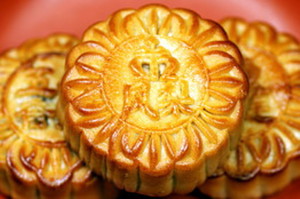Image source: oregonlive.com
Andrew Yang
Sales Representative for Elasto Proxy
China’s Mid-Autumn Festival celebrates the harvest and reunites families and friends under a bright, silvery moon. In ancient times, members of the country’s various ethnic groups worshipped this fullest moon of the year and held nighttime ceremonies to greet the coming winter. Today, people break from their busy routines to give thanks and remember those who are far from home. While gazing at the mid-autumn moonlight, we wish the very best to those who cannot be with us.
Dynasties and Traditions
Like our Chinese New Year celebration, the Mid-Autumn Festival is rich in tradition and rooted in China’s dynastic past. Beginning with the ancient Xia and Shang Dynasties (2000 B.C. to 1066 B.C) and through the Zhou Dynasty (1066 B.C. to 221 B.C.), China’s altar was the nighttime sky. Observance of the Moon Festival grew during the Tang Dynasty (618 to 907 A.D.) and blossomed during both the Ming Dynasty (1368 to 1644 A.D.) and the Qing Dynasty (1644 to 1911 A.D.).
During the time of the Southern Song Dynasty (1127 to 1279 A.D.), the Mid-Autumn Festival added a culinary custom that continues today. To express their fondest wishes for a joyous family reunion, celebrants began sending moon-shaped cakes to each another. Measuring three inches in diameter and a half-inch thick, these sweet treats resemble Western fruitcakes in taste and consistency. Ingredients typically include melon seeds, lotus seeds, almonds, minced meats, bean paste, orange peels, eggs, and lard.
Family and Country
According to legend, these delicious pastries also served a national purpose. During the Yuan Dynasty (1280 to 1368 A.D.), China rebelled against Mongolian rule. To avoid detection and share battle plans, rebel leaders sent messages hidden in cakes as the Mid-Autumn Festival drew near. Under the light of the year’s brightest moon, the rebels then executed their plan of attack and overthrew the invaders. Today, moon cakes are eaten to commemorate this victory and to honor family members.
Modern moon cakes come in various shapes and sizes, but traditional pastries usually include a salted duck egg at the center of the cake. Each pastry’s golden-brown crust is decorated with symbols of the Mid-Autumn Festival, and 13 pastries are piled in a pyramid to represent the 13 moons of the Chinese year. With so many delicious cakes to enjoy and share, the Moon Festival is a time for celebration that falls on the 15th day of the eighth month in the Chinese lunar calendar.
From Cakes to Conferences
As many readers know, autumn is also an important time for tradeshows and business meetings. This year’s Mid-Autumn Festival ended on September 19, but October also promises to be an exciting month.
As Elasto Proxy’s sales representative in China, I look forward to traveling to Shanghai and Jinan as part of a trade delegation on October 14. Along with the Chinese government and Export Quebec, I’ll be meeting with forward-thinking companies, attending various seminars, and sharing how Elasto Proxy provides high-quality sealing solutions to a variety of industries.
On behalf of Elasto Proxy, I hope that all who celebrated the recent Mid-Autumn Festival enjoyed their time with family and friends, and will enjoy luck and prosperity in the year to come. To learn more about how Elasto Proxy meets sealing challenges (or just to discuss moon cakes!), please feel free to email me at ayang@elastoproxy.com.










